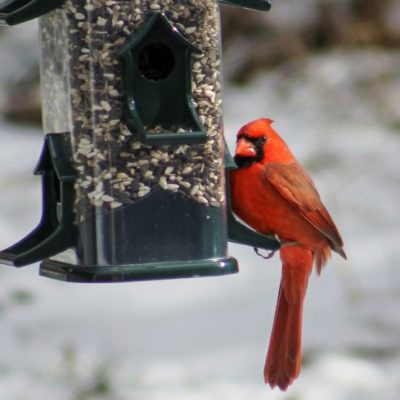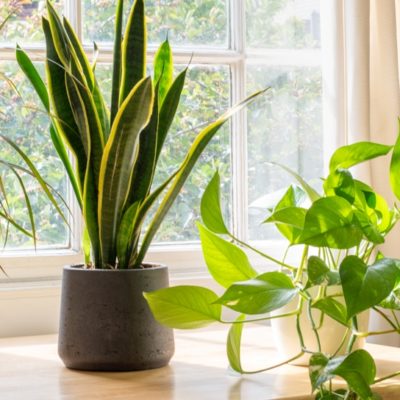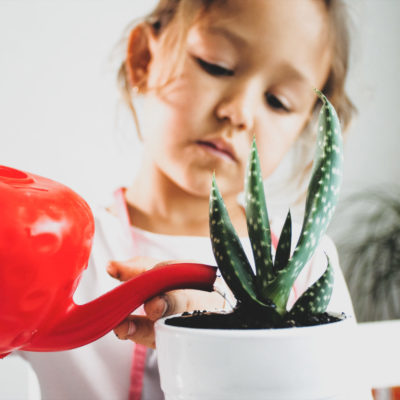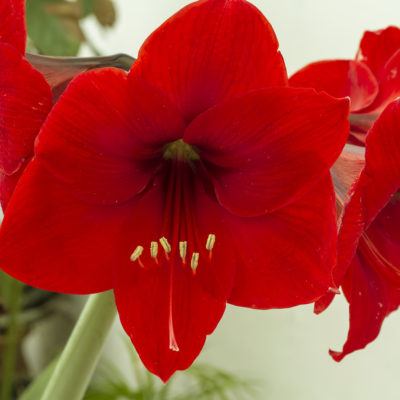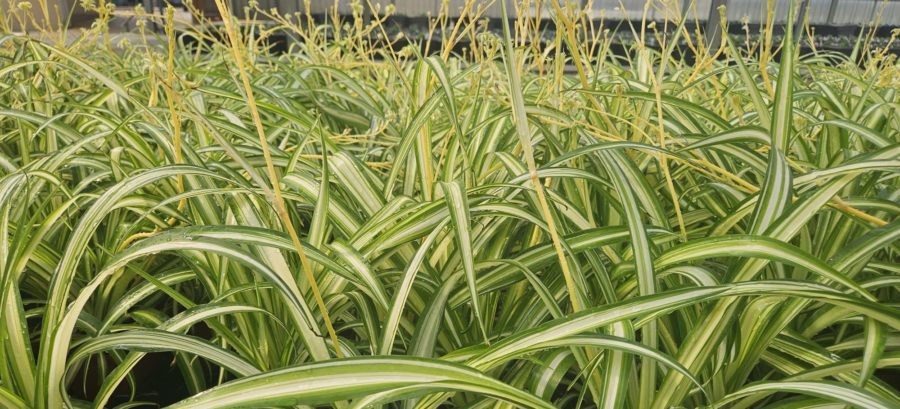
Tropical Plant Profile: Spider Plant
Just about everyone knows what a spider plant is, right? You see a hanging basket filled to bursting with long, narrow, arching leaves that are typically green with a wide central stripe of bright white. And those extra stems, also long and arching, that are filled with tiny baby plants are a dead giveaway, too. So, if spider plants are so common, why are they still so popular?
The easy answer is that they are just that: easy! Spider plant, sometimes called “spider ivy” or “airplane plant” but botanically known as Chlorophytum comosum, can handle most light conditions, from low to bright, which means they can go just about anywhere in your home that has a window. They also have thick rhizome-like roots that can store quite a lot of moisture, so they can handle longer periods between waterings. They are very sensitive to chlorine and other additives, so avoid using treated water and never use softened water on any of your plants.
But where they really shine is in the Clean Air Houseplant category! Back in the 1980s, NASA took a bunch of tropical houseplants up in a rocket and studied their effects on the confined airspace within the space station. The Clean Air Study, as they called it, found that spider plants were one of the best performers when it came to cleaning toxins out of the air. Of course, there have been many other similar studies done over the years, with results showing that tropical houseplants (and spider plants in particular) do indeed clean the air and increase humidity in the home. Isn’t that nice of them?
If you’ve ever had a spider plant, you’ll notice that they’ll
grow long arching stems from time to time. Sometimes they’ll have little white flowers, and if you leave them to their own devices those little blooms can turn into tiny versions of the mother plant. Those little guys are all baby spider plants called “offsets”, and they are how this houseplant expands their hold on the world: it’s the plant that keeps on giving! Replanting these mini spiders is super easy: let them grow on the stems until you see little brown nodes on their bottoms (these are their roots), then just pop them off the stem and gently push them into a small container filled with potting soil. Water them gently but thoroughly, keeping them slightly moist for a few weeks while their root system develops, after which you can keep them for yourself or give them as gifts!
So, to recap: spider plants can grow and thrive in just about any light condition and they can handle drying out between deep waterings. Plus, they help clean the air of toxins and increase humidity in the home, which is perfect for our colder months as we spend more time indoors. For us, these traits make spider plants one of the best houseplant gifts you could ever give to anyone on your list! From holidays to housewarmings, graduations to get-well-soon wishes, no matter the occasion a spider plant is a fantastic foliage gift!
Did you know that spider plants come in other varieties than the traditional green with white inner stripe? That’s just one variety in this vast houseplant family; to date, there are hundreds of different chlorophytum varieties! Belgian carries a few of the more distinct varieties, listed below, and we always try to have lots of the tried and true green-outside-white-inside in stock:
‘Inverse’, sometimes called ‘Variegatum’, is also green and white but reversed, with the bright green central stripe flanked by white outer margins.
‘Hawaiian’ is a bright, lush green with a golden yellow central margin, giving them a unique colour combination.
‘Bonnie’ is known as the curly spider plant, and for obvious reasons! Their leaves are super curly and mound over the edge of their pot rather than arch over and beyond its borders. Their baby spiders are super curly, too, which makes them extra adorable!
Light: Low to Medium to Bright Light. Spider Plants can go nearly everywhere!
Water: Let plants dry well then water deeply. Remember: the more sunlight your spider plant receives, the faster they’ll dry out and the sooner you’ll have to water them.
Fertilizer: Feed an all-purpose fertilizer every 4th watering.
Fun Facts about Spider Plants!
- Chlorophytum is Greek for “green” (chloros) and “plant” (phyton), while comosum is Latin for “long hair” – a mix of two ancient languages to describe a plant by its most basic traits!
- The “spider” part of its name refers to its ability to produce offsets, or “spiders”, on its long arching stems. They do look a bit spooky, don’t they?
- Spider plants symbolize many things, including luck, adaptability, resilience, good health, new beginnings/fresh start, and many other positive themes.
- A single spider plant can live up to 20 years and produce thousands of baby spiders!
- Caring for houseplants has been shown to help relieve stress, increase oxygen levels, and improve our overall health. Spider plants top this list because of their low maintenance and resilience!


